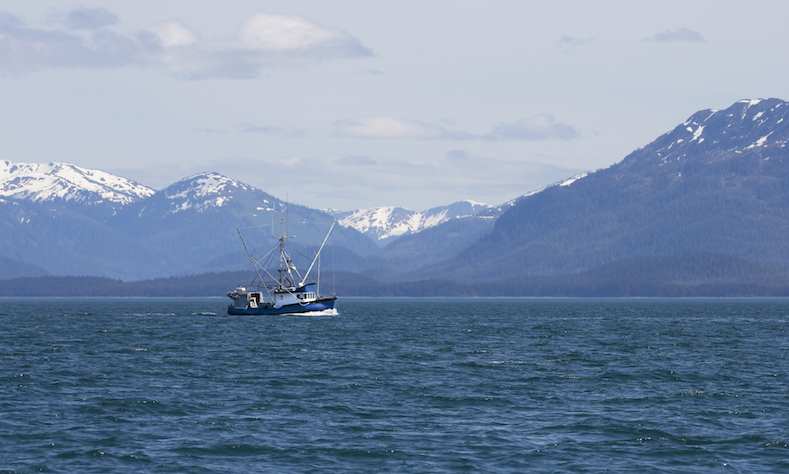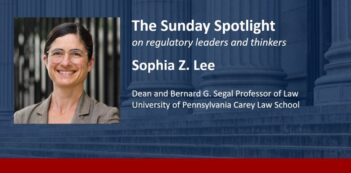
The Alaska Department of Fish and Game monitors effect of hatchery salmon on wild stocks.
The idea of Alaska salmon calls to mind images of fish swimming up streams in picturesque wilderness, completing a grueling journey to return to the same places they began their lives. Yet billions of salmon in Alaska do not begin their lives in this way—instead, they are born in hatcheries and released to grow to adulthood in the open ocean, where they mix with naturally occurring salmon populations and eventually make up part of the commercial salmon harvest.
Alaska’s salmon hatchery program supplements the wild salmon catch by increasing the number of fish that survive the early stages of life. In 2017, Alaska’s salmon hatcheries released about 1.6 billion juveniles, and of those, about 50 million adult salmon returned—approximately 21 percent of the total salmon harvest in Alaska. Although numerous statutes and regulations mandate that the Alaska Department of Fish and Game (ADF&G) protect wild Alaska salmon populations, some commentators question whether hatchery programs harm wild populations.
Salmon begin their lives in freshwater, but as the fish grow to adulthood they transition to living in saltwater before returning to their place of birth to lay the eggs that will become the next generation. Hatcheries take advantage of this life cycle by protecting billions of eggs and juveniles from predators and other environmental factors until they reach an age where the hatcheries can release them into the natural environment. The hatchery salmon that survive to reproductive age out in the ocean return to their birth hatchery, where some are randomly selected for the collection and fertilization of eggs for the cycle to repeat the following year. Most returnees, however, are harvested to be sold as food.
A 2017 study examined the effects of pink salmon population enhancement through hatcheries and concluded that although enhancement has resulted in overall greater yields and stable wild salmon populations, greater overall yields come at the expense of an increase in wild pink salmon population. The study’s authors suggest that this effect may be limited to pink salmon populations in the specific geographic areas studied, and they encourage more research to analyze the ecosystem-wide effects of salmon enhancement.
Because salmon released from hatcheries compete with wild salmon, the ADF&G regulates the hatchery program, including the number and location of hatcheries, the number of juvenile fish released, and the genetic makeup of the fish used as breeding stock.
The ADF&G selects locations for hatcheries with the goal of preventing the returning salmon from mixing with wild populations to measure the latter’s size accurately. Additionally, hatcheries mark the salmon that they rear, allowing scientists to measure how many hatchery fish stray into nearby wild populations. Finally, genetic testing to ensure that the individual fish used to breed future hatchery generations remain similar to wild salmon in streams in close proximity to the hatcheries helps to maintain genetic diversity and minimize any harm to wild populations if straying does occur.
The ADF&G supports research into the impact of hatcheries on wild salmon populations. A panel organized by the ADF&G composed of scientists from the department, the University of Alaska, and the National Marine Fisheries Service designed and implemented a long-term study, beginning in 2012, to examine the interactions between hatchery salmon and wild populations.
The study specifically examines two species of salmon—pink and chum—in the Prince William Sound and Southeast Alaska. Scientists aim to measure the genetic structure of salmon in the area, the extent to which hatchery salmon stray into wild populations, and the impact that this straying has on the productivity of wild populations. Annual reports detail findings about the percentage of hatchery salmon in specific streams as the study progresses.
Although evidence exists that hatchery salmon do stray into wild populations and compete with wild salmon, the preliminary results from the ADF&G study provided sufficient data for the Marine Stewardship Council to recertify the entire Alaska salmon fishery program as environmentally sustainable. The Council—an international nonprofit organization that reviews fisheries based on standards it developed from international best practice guidelines—initially certified the Alaska fishery in 2000 and has recertified it several times since, citing the regulations that codify the ADF&G’s management program as a strength of the fishery.
Under the program, a private nonprofit corporation seeking to operate a hatchery must receive a permit from the ADF&G. This process requires submission of an application with detailed information on the proposed hatchery plan and that considers measures to protect wild populations, such as proximity of a hatchery to streams with wild salmon populations and the source of the fish that will be used for egg collection. Before granting a permit, the ADF&G must analyze the feasibility of the proposed plan, including the effects of the proposed hatchery on the existing regional fishery management. State regulations also require that the ADF&G conduct a public hearing on completed applications to give any stakeholders the opportunity to weigh in on the proposed plan.
Although getting sustainable salmon may not be as straightforward as it first appears, the regulatory oversight by the ADF&G helps establish Alaska fisheries as an internationally certified sustainable source of salmon. The ongoing study will aid the ADF&G in its efforts to continue to monitor the effects of hatcheries on wild populations to protect the state’s natural resources and people’s ability to use them.



